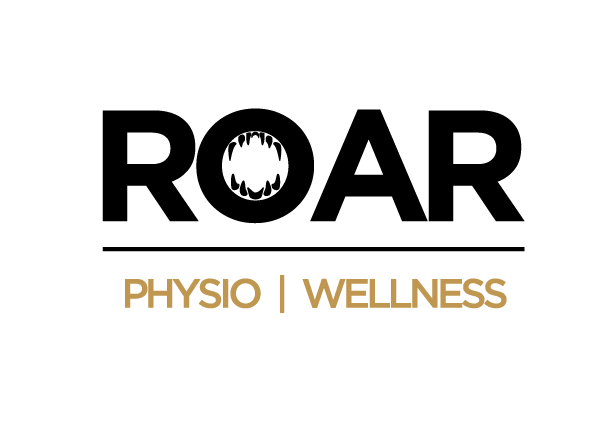Roar Physio Wellness in Sherwood Park provides effective radial tunnel syndrome solutions, focusing on holistic rehabilitation services for lasting elbow pain relief and improved functionality.
Understanding Radial Tunnel Syndrome
Radial tunnel syndrome is characterized by pressure on the radial nerve, which extends from the forearm into the hand. This condition can manifest as pain, weakness, and difficulty with hand and arm movements, significantly impacting an individual’s daily life and activities.
Symptoms of Radial Tunnel Syndrome
Common signs of radial tunnel syndrome include:
- Persistent pain in the outer elbow.
- Forearm tenderness.
- Weakness in wrist and hand movements.
- Challenges with tasks requiring fine motor skills.
Recognizing these symptoms early and seeking treatment is crucial for preventing further complications and ensuring a successful recovery.
Causes of Radial Tunnel Syndrome
Factors leading to radial tunnel syndrome often involve:
- Repetitive motion of the arm and wrist.
- Direct pressure on the radial nerve.
- Arm injury or trauma.
- Muscle overuse leading to nerve compression.
Identifying the root cause is essential for tailoring an effective treatment plan.
Our Treatment Approach for Radial Tunnel Syndrome
At Roar Physio Wellness, we prioritize a personalized and comprehensive treatment strategy, supporting your body’s recovery while focusing on restoring strength and mobility.
Detailed Evaluation
Our treatment journey begins with an in-depth assessment, including a physical examination to accurately assess radial tunnel syndrome and evaluate its severity.
Tailored Treatment Plans
Following our detailed evaluation, we develop tailored treatment plans designed to address the unique needs of individuals with radial tunnel syndrome. Through a combination of therapeutic interventions, we strive to provide comprehensive care that supports your journey to recovery.
Physiotherapy for Radial Tunnel Syndrome
Physiotherapy forms the cornerstone of our approach, aimed at reducing nerve pressure and strengthening the muscles around the radial nerve.
- Mobility Exercises: Designed to enhance elbow and wrist flexibility and decrease stiffness.
- Strengthening Exercises: Targeted exercises to fortify the muscles supporting the radial nerve, preventing further compression.
- Manual Therapy: Utilizing hands-on techniques such as massage to increase circulation, relieve tension, and promote overall well-being.
Ergonomic Adjustments and Lifestyle Advice
We also offer guidance on making ergonomic and lifestyle changes to help manage symptoms and avoid recurrence:
- Ergonomic Recommendations: Tips for setting up your work and living spaces to minimize arm and wrist strain.
- Lifestyle Modifications: Suggestions for altering routines and habits to support recovery and prevent future issues.
Our Range of Services
At Roar Physio Wellness, we extend our offerings beyond just physiotherapy to encompass a wide array of treatments for numerous musculoskeletal issues. Our skilled professionals are equipped to provide holistic care tailored specifically to your individual health requirements.
- Physiotherapy
- Dry Needling
- Joint Mobilizations
- Myofascial Techniques
- Personal Training
- Athletic Performance
- Vestibular Rehab
Why Choose Roar Physio Wellness?
Choosing Roar Physio Wellness means opting for a clinic that places your recovery and well-being at the forefront. Our team of experienced healthcare professionals, state-of-the-art facilities, and commitment to effective, innovative treatments distinguish us in the field of rehabilitation.
Our Commitment to You:
- Professional care from experienced rehabilitation experts.
- A nurturing environment conducive to recovery.
- Personalized treatment plans aimed at achieving optimal outcomes.
Live Life Free From Pain
If radial tunnel syndrome is affecting your quality of life, contact Roar Physio Wellness in Sherwood Park today. Our dedicated team is prepared to craft a customized treatment plan focused on your specific needs and goals, guiding you toward a swift and effective recovery. Let us help you return to your daily activities with confidence and ease.
Innovative Treatments for Common Elbow Conditions
|
|
Radial Tunnel Syndrome Treatment Sherwood Park FAQs
How Long Does Recovery Take?
The recovery time for radial tunnel syndrome varies depending on the severity of the nerve compression and the individual’s response to treatment. Generally, clients begin to see improvement within a few weeks of starting physiotherapy. However, complete recovery can take several months. Consistency with prescribed physiotherapy exercises and adherence to ergonomic adjustments are crucial for a speedy recovery. It’s important to set realistic expectations and work closely with your healthcare provider to monitor progress and adjust the treatment plan as needed.
Can Radial Tunnel Syndrome Come Back After Treatment?
Yes, radial tunnel syndrome can recur after treatment, especially if the initial causative factors are not adequately addressed. Recurrence can be minimized by continuing to practice ergonomic adjustments, maintaining strength and flexibility in the forearm, and avoiding repetitive strain or overuse of the affected arm. Regular follow-up with your healthcare provider and possibly periodic assessments with a physiotherapist can help detect and address any early signs of recurrence, ensuring long-term management of the condition.
How Can I Prevent Radial Tunnel Syndrome?
Preventing radial tunnel syndrome involves minimizing stress on the radial nerve by adopting ergonomic work practices, taking regular breaks during activities that involve repetitive arm or wrist movements, and maintaining good physical health. Strengthening and stretching exercises for the arm, wrist, and hand can also help keep the muscles and nerves in good condition, reducing the risk of compression. Awareness of body positioning and movement during daily activities is key to preventing undue pressure on the radial nerve.
Can Radial Tunnel Syndrome Affect Both Arms?
While radial tunnel syndrome typically affects one arm, the condition can develop in both arms, especially in individuals who engage in repetitive activities or occupations that place symmetrical stress on both arms. However, bilateral occurrence is less common. Treatment and management strategies remain the same for both unilateral and bilateral cases, focusing on relieving nerve compression, strengthening the surrounding muscles, and making ergonomic and lifestyle adjustments to prevent recurrence. If you experience symptoms in both arms, it’s crucial to seek a comprehensive evaluation to determine the best course of treatment.
Roar Physio Wellness
912 Ash St, Sherwood Park, AB T8A 2G1, Canada
(780) 570-9499
Hours:
Monday to Friday: 10 AM – 8 PM
Saturday: 10 AM – 3 PM
Sunday: 10 AM – 3 PM
